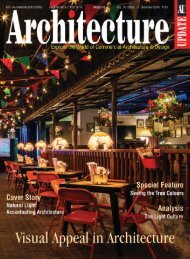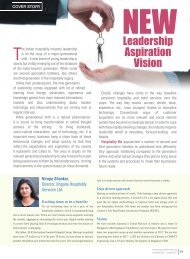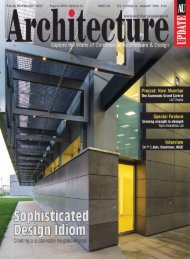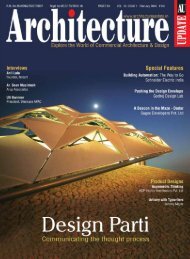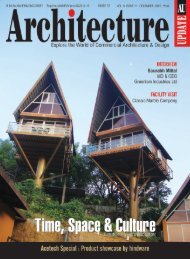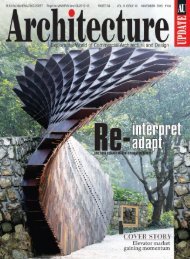Unfolding Narratives
Create successful ePaper yourself
Turn your PDF publications into a flip-book with our unique Google optimized e-Paper software.
prasaad, pooja material, embellishments for the deity and assorted<br />
food, sweets, snacks and tea stalls. Finding no other space to occupy,<br />
they built over the footpath, pushing pedestrians to the road, jostling<br />
for space with rickshaws, cars and goods vehicles. Further, the<br />
approach road is extremely slow moving and congested during regular<br />
days and a logistics nightmare on festive days.<br />
CASE FOR INTERVENTION<br />
Convergence of multi-mode means of access: The temple is accessed<br />
through a single 10.5 meters wide road, almost 400 meters in length<br />
aptly called the Rani Rashmoni Road.<br />
The street originates at a traffic rotary, a junction for the PWD road<br />
leading from Kolkata on South-East direction, the PWD road leading<br />
to Vivekanand Setu on the Western Direction and Ramkrishna<br />
Paramhans Dev Road leading North. The rotary is also the entrance<br />
point for the Dakshineswar Temple Railway Station and the bus stop.<br />
The convergence of buses, cars, slow moving traffic like rickshaws,<br />
railway commuters and goods vehicles causes massive pile-up at the<br />
rotary.<br />
Anand Sharma studied (B.Arch.) Hons, from IIT,<br />
Kharagpur and started the practice ‘Tevatia Chauhan &<br />
Sharma Architects’ in 1995. In 2003, the practice was<br />
rechristened as Design Forum International (DFI) with a<br />
clear intent to foster an egalitarian organisational ethos<br />
where distinctive architectural talent finds selfexpression.<br />
Sharma is an architect, talented singer and literary<br />
enthusiast. At DFI, he coined the slogan of ‘People first’<br />
and constantly uses his leadership and people skills to mentor and upscale the<br />
creative and intellectual horsepower.<br />
He believes that cities must have a distinct character and as an architect, he lays<br />
great emphasis on including contextuality in design responses. He is an exceptional<br />
team leader possessing the capacity to carry a project from initiation to final<br />
production.<br />
AREAS FOR INTERVENTION<br />
The rotary is the first point of focus for an intervention, followed by<br />
the approach road, Rani Rashmoni Road, the streets leading out of it<br />
and the culmination of the approach road at the temple, at the entry<br />
gates to the temple compound.<br />
Collating key thoughts and ideas for design initialisation, the West<br />
Bengal Government tasked KMDA to create a design brief and<br />
project report to enable floating of tenders leading to ‘Design and<br />
Build’ solutions for resolving the situation. Primary concerns were<br />
segregation of traffic and pedestrian movement, further segregation<br />
of traffic into motorised and non-motorised, ensuring livelihood of<br />
the shop keepers, ease of movement, comfort and safety of the<br />
devotees along with seamless connectivity from point of<br />
disembarkation to the temple gates for the devotees. The resulting<br />
idea therefore aimed to transfer both the pedestrian circulation and<br />
the shops to an elevated concourse, thereby leaving the road level<br />
Architecture Update March 2016 29



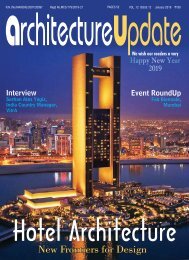
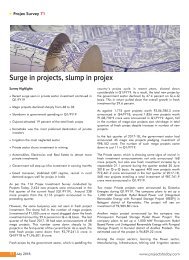
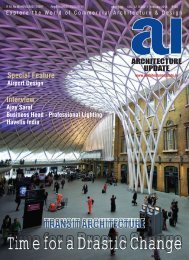

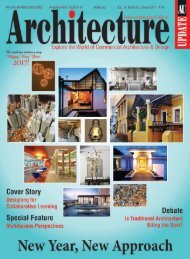
![40-41] Book Review_Sourabh Gupta](https://img.yumpu.com/56720840/1/190x253/40-41-book-review-sourabh-gupta.jpg?quality=85)
